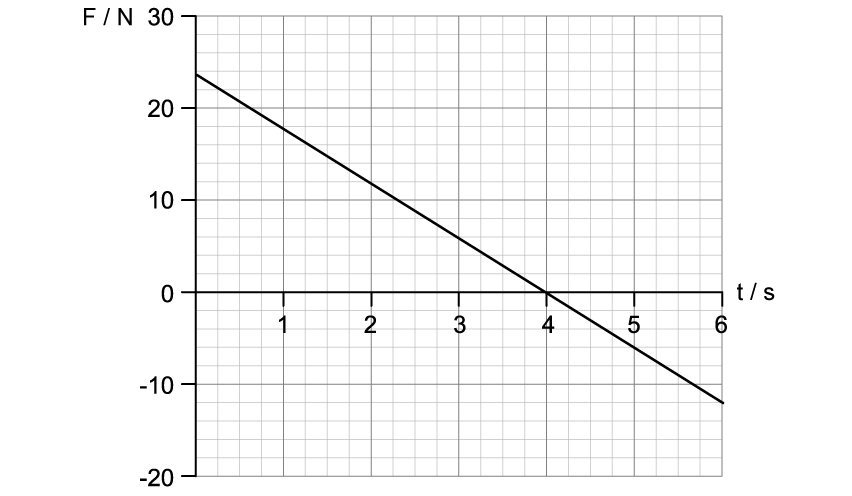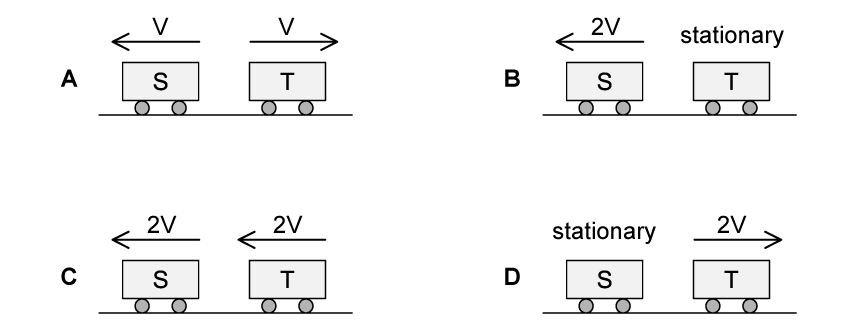Question 1
A force acts on a mass of 5.0 kg and it is initially at rest.

What is the time taken for the mass to reach an acceleration of 2 m s-2?
2.50 s
2.20 s
2.25 s
2.00 s
A force acts on a mass of 5.0 kg and it is initially at rest.

What is the time taken for the mass to reach an acceleration of 2 m s-2?
2.50 s
2.20 s
2.25 s
2.00 s
A body of mass 3M at rest explodes into two pieces of mass 2M and M.
What is the ratio and
?
|
|
||
|
A. |
-1 |
|
|
B. |
1 |
-1 |
|
C. |
2 |
|
|
D. |
-2 |
Which of the following is an elastic collision?
A ball dropped from a height and bouncing up to a lower height
Two railway trucks colliding and they link together
Two gas molecules collide and a bond is formed between them
Two gas molecules collide and then travel perpendicular to each other
A ball of mass m travels horizontally and strikes a vertical wall with a speed of vi ms-1. It then rebounds horizontally at speed vf ms-1. The ball is in contact with the wall for time Δt.
What is if the ball rebounds after an impulse of magnitude I?
|
A. |
vfinal = |
|
B. |
vfinal = |
|
C. |
vfinal = |
|
D. |
vfinal = |
A stone of mass 0.5 kg is thrown with an initial speed of 10 m s-1 at an angle θ to the vertical. P is the highest point of the motion and air resistance is negligible.

What is the momentum of the stone at P?
5 sin θ
5
5 cos θ
0
A truck T moving horizontally collides with an identical truck S that is at rest.
T strikes S with speed 2v.
What is a possible outcome of the collision?
A ball of mass m strikes a vertical wall with a speed v at an angle of θ to the wall. The ball rebounds at the same speed and angle in time t. What is the magnitude of the impulse on the wall?

zero
2mv
2mv sin θ
2mv cos θ
A ball of mass 4.0 kg, initially at rest, is acted on by a force F which varies with t.

What is the velocity of the ball after 14 s?
7 m s-1
56 m s-1
14 m s-1
28 m s-1
Which of the following is true for momentum and impulse?
Momentum is conserved in an inelastic collision
Impulse is the momentum
The direction in which an object is travelling in doesn’t affect its impulse
A heavier object always experiences a greater impulse than a lighter one
Two balls m and 2m collide elastically with speeds v and 2v respectively. After the collision, they both move in opposite directions.
What speed does the 2m ball move with after the collision?
|
A. |
|
|
B. |
|
|
C. |
|
|
D. |
|